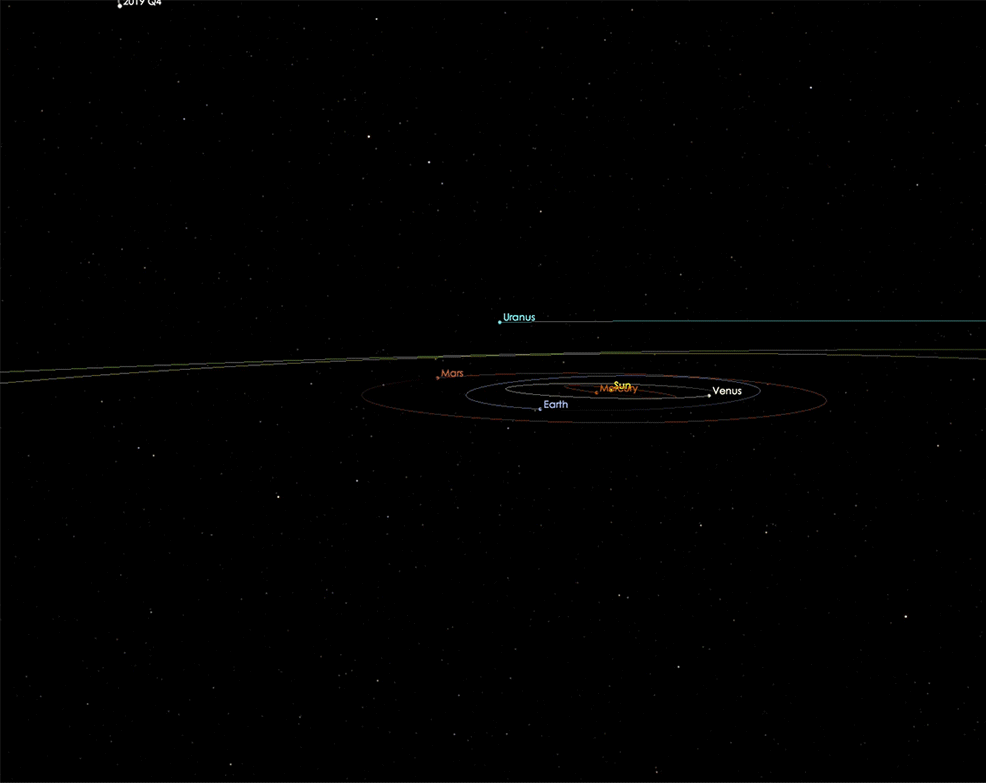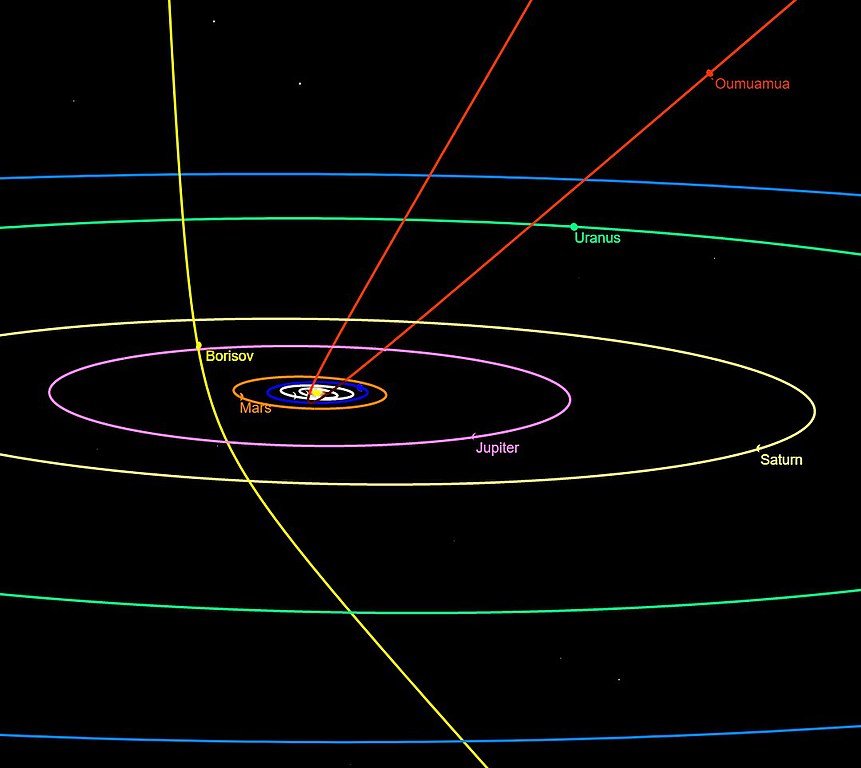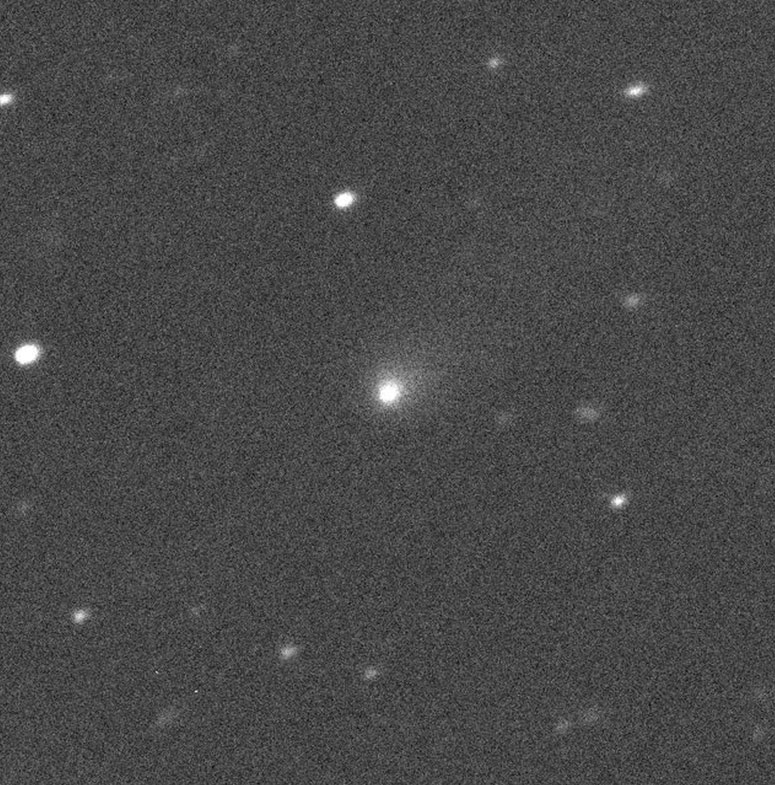
14th September 2019 A second interstellar object? Astronomers at the Minor Planet Center report the detection of comet C/2019 Q4 (Borisov), likely a second interstellar object, following the earlier discovery of 'Oumuamua.
A newly discovered comet has excited the astronomical community this week, because it appears to have originated from outside the Solar System. The object – designated C/2019 Q4 (Borisov) – was discovered on 30th August 2019 by Gennady Borisov at the MARGO observatory in Nauchnij, Crimea. The official confirmation of an interstellar comet has not yet been made, but assuming it is interstellar, it would be only the second such object detected. The first, 'Oumuamua, was observed and confirmed in October 2017. The new comet is currently entering the inner Solar System, but will remain farther than the orbit of Mars, and no closer to Earth than about 300 million km (approximately 190 million miles). The GIF animation above shows its trajectory from 18th March 2019 to the present day, with an estimated future projection to 18th March 2020. After the initial detections of the comet, an observation system known as Scout – located at NASA's Jet Propulsion Laboratory in Pasadena, California – automatically flagged the object as possibly interstellar. Astronomers at NASA then worked with a team from the European Space Agency's Near-Earth Object Coordination Centre, Italy, to gain additional observations. The Minor Planet Center in Cambridge, Massachusetts, provided input too. Together this collaboration produced a more precise estimate of the trajectory, allowing the researchers to determine whether it originated within our Solar System or came from elsewhere in the galaxy. Below is a trajectory comparison with 'Oumuamua.
"The comet's current velocity is high, about 93,000 mph (150,000 km/h, or 41.6 km/second), which is well above the typical velocities of objects orbiting the Sun at that distance," said Davide Farnocchia of NASA's Center for Near-Earth Object Studies at JPL. "The high velocity indicates not only that the object likely originated from outside our Solar System, but also that it will leave and head back to interstellar space." "This is the first highly active object that we've seen coming in from something that formed around another star," said Michele Bannister, an astronomer at Queen's University Belfast (by contrast, 'Oumuamua showed no signs of a comet coma). "What's really fantastic is that this thing should be observable for a year," said Matthew Holman, interim director of the Minor Planet Center. While its origins are not yet known, "we get to see one little bit of another solar system."
C/2019 Q4 is now 420 million km (260 million miles) from the Sun and will reach its closest point, known as perihelion, on 8th December 2019, at a distance of about 300 million km (190 million miles). On 26th October, it will pass through the ecliptic plane – the imaginary, flat "disk" on which Earth and the other planets circle around the Sun – from above at roughly a 40-degree angle. C/2019 Q4 was established as being cometary due to its fuzzy appearance, which indicates that the object has a central icy body that is producing a surrounding cloud of dust and particles as it approaches the Sun and heats up. Its location in the sky (as seen from Earth) places it near the Sun, an area of sky not usually scanned by the large ground-based asteroid surveys or NASA's asteroid-hunting NEOWISE spacecraft. The comet will be viewable with professional telescopes for months to come. "The object will peak in brightness in mid-December and continue to be observable with moderate-sized telescopes until April 2020," says Farnocchia. "After that, it will only be observable with larger professional telescopes through October 2020." The comet nucleus is somewhere between 2 and 16 km (1.2 and 10 miles) in diameter. For comparison, 'Oumuamua has been estimated at between 100 and 1,000 metres long. Astronomers will now continue their observations to get a more precise figure and to further characterise the object's rotation, trajectory and other physical properties.
Comments »
If you enjoyed this article, please consider sharing it:
|









